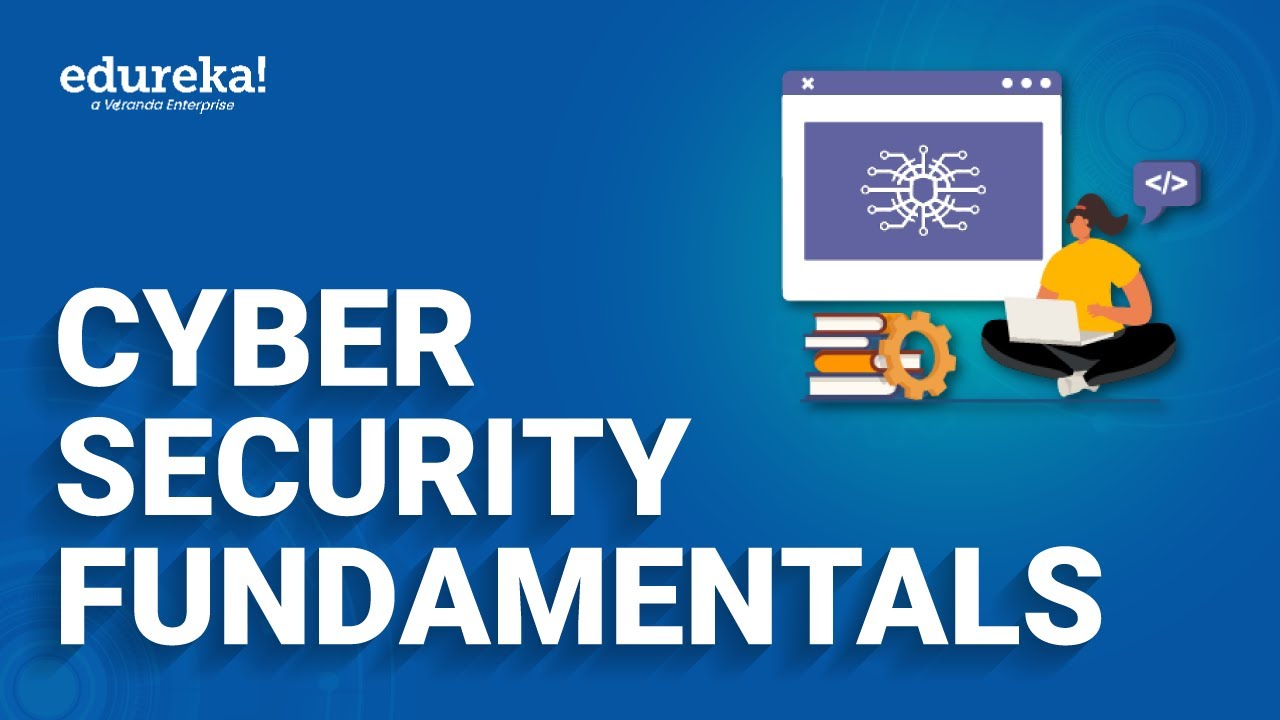Cybersecurity Architecture: Fundamentals of Confidentiality, Integrity, and Availability
Summary
TLDRIn this video, we explore the CIA triad in cybersecurity—Confidentiality, Integrity, and Availability. Confidentiality is protected through access control and encryption, ensuring only authorized users can access sensitive data. Integrity ensures data remains unchanged, using cryptographic technologies to detect tampering. Availability focuses on keeping systems accessible to authorized users, even in the face of DoS or DDoS attacks. The CIA triad serves as a fundamental checklist for securing IT systems and data, emphasizing the need for robust protection, detection, and availability strategies in cybersecurity architecture.
Takeaways
- 😀 Confidentiality is achieved through two main technologies: access control (authentication and authorization) and encryption.
- 😀 Authentication answers the question, 'Who are you?', while authorization determines 'Are you allowed to do this or not?'
- 😀 Access control can involve methods like multifactor authentication (MFA) and role-based access control (RBAC).
- 😀 Encryption ensures confidentiality by transforming messages into unreadable formats for unauthorized users, using symmetric encryption with a shared key.
- 😀 Integrity ensures data is true to itself, and cryptographic methods like digital signatures and message authentication codes help detect data tampering.
- 😀 Blockchain serves as an example of integrity, where records cannot be modified or deleted without detection.
- 😀 Availability means ensuring systems and resources are available to authorized users and are not disrupted by attacks.
- 😀 Denial of Service (DoS) attacks flood a system with excessive traffic, preventing legitimate users from accessing it.
- 😀 Distributed Denial of Service (DDoS) attacks amplify the effect of DoS attacks by using multiple systems under the control of attackers.
- 😀 A SYN flood is a type of DoS attack where a system is overwhelmed by half-open connections, using resources without completing the connection process.
- 😀 The CIA triad (Confidentiality, Integrity, and Availability) is a fundamental framework for assessing and securing systems in cybersecurity projects.
Q & A
What is the CIA triad in cybersecurity?
-The CIA triad refers to three core principles in cybersecurity: Confidentiality, Integrity, and Availability. These principles guide the protection of data and systems in secure environments.
How does authentication work in ensuring confidentiality?
-Authentication verifies the identity of a user by answering the question, 'Who are you?' It ensures that only authorized users can access specific resources.
What is the difference between authentication and authorization?
-Authentication is the process of verifying the identity of a user, while authorization determines whether that authenticated user is allowed to access specific resources or perform certain actions.
How does multifactor authentication contribute to confidentiality?
-Multifactor authentication requires users to provide multiple forms of identification, such as something they know (password), something they have (device), or something they are (biometric), making it more difficult for unauthorized users to gain access.
What role does role-based access control (RBAC) play in ensuring confidentiality?
-RBAC ensures that even if a user is authenticated, they can only access resources that their role allows. This limits access to sensitive information based on predefined user roles.
How does encryption contribute to confidentiality?
-Encryption ensures that data is transformed into an unreadable format using cryptographic keys. Only authorized users with the correct decryption key can access the original data, maintaining its confidentiality during transmission or storage.
What is data integrity, and why is it important?
-Data integrity ensures that information remains accurate and unaltered. It’s vital because if data is tampered with, it can lead to incorrect or malicious actions, which can compromise the trustworthiness of the system.
What technologies are used to maintain data integrity?
-Cryptographic technologies, such as digital signatures and message authentication codes (MACs), help verify that data has not been tampered with. These technologies enable detection of any modifications to the data.
What is the role of blockchain in ensuring data integrity?
-Blockchain is a distributed ledger technology that ensures data integrity by making records immutable. Once a record is added, it cannot be altered or deleted, providing a verifiable and unchangeable history of transactions.
What is a denial of service (DoS) attack, and how does it affect availability?
-A DoS attack floods a system with traffic or requests, overwhelming the resources and making the system unavailable to legitimate users. This can prevent users from accessing necessary services or information.
Outlines

This section is available to paid users only. Please upgrade to access this part.
Upgrade NowMindmap

This section is available to paid users only. Please upgrade to access this part.
Upgrade NowKeywords

This section is available to paid users only. Please upgrade to access this part.
Upgrade NowHighlights

This section is available to paid users only. Please upgrade to access this part.
Upgrade NowTranscripts

This section is available to paid users only. Please upgrade to access this part.
Upgrade NowBrowse More Related Video

CIA Triad: Confidentiality, Integrity & Availability | Cybersecurity

3- CompTIA Security + SY0-701, CIA Triad

The CIA Triad

What is the Principle Of Least Privilege (POLP)?

Cyber security fundamentals | Understanding Cybersecurity Basics | Edureka Rewind

Cybersecurity (Common Threats, Types of Hackers, CIA Triad)
5.0 / 5 (0 votes)